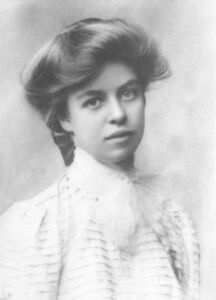By Kellie Hale

First Lady Eleanor Roosevelt Courtesy of the Franklin D. Roosevelt Library archives.
Did you know that First Lady Eleanor Roosevelt is considered the initial supporter of women in the field of emergency management? Mrs. Roosevelt encouraged her husband to appoint Florence Kerr as project lead to research and implement ways on how women can utilize their skills during World War II. The two women helped establish the development of the Office of Civil Defense (OCD). The purpose of the OCD was to bring communities across the United States health programs and medical care for civilians if an emergency event, such as a military attack on the country, were to occur unexpectedly.
When Mrs. Roosevelt was appointed Assistant Director of the Office of the Secretary of Defense (OSD) in September of 1941, she was considered at the time the “first woman in Homeland Security/Emergency Management.” Pretty cool information and not something I knew about until my colleague, Nancy Aird, mentioned it.
It is no secret that homeland security, emergency management, and disaster preparedness are fields that largely consist of males. Sometimes it can be hard for a woman to work within a male-dominated field. That does not mean that our male counterparts cannot be allies, as I have known many wonderful supportive males who continue to encourage and support women in the HSEM field. It is merely that women are continuing to break down the barriers to be in critical and leadership roles throughout emergency management.
The barriers women most likely encounter include:
- Difficult workplace environment.
- Negative organizational culture.
- Lack of on-the-job training.
- Worry of not living up to the expectations or
being able to handle the duties and demands
of the position. - Lack of training opportunities provided to
those new to the field.
Women are continuing to make huge strides in the field of disaster preparedness and response. They are essentially the heart of emergency management and disaster preparedness. Why is that? When disasters strike, women are affected at a higher percentage. According to studies, it is revealed that women are more inclined to stay behind and not evacuate when a disaster is advancing. This is because some women hold the responsibility of caring for their family members (e.g., young, old, disabled). Women are also more prone to experience disadvantages in the aftermath of a disaster. Sometimes, this is due to traditions, social and traditional, that restrict and suppress their mobility or influence when it comes to crucial decisions, particularly those that affect their family’s security.
I have been fortunate to know many amazing women within the emergency management and disaster preparedness field. One of my first big initiatives at the Center of Excellence for Homeland Security Emergency Management was organizing the annual Women in Leadership Forums, which was first established in 2015. The Forums provided educators and industry partners the opportunity to come together and learn about diversity in every level of leadership and offered leadership development.
The Women in Leadership Forums’ overall purpose was to help women identify what their strengths are as leaders, where they want to go in terms of their education and career, and help them find and follow their dreams and goals. I wanted participants to walk away with an understanding of the significance of creating strong and dynamic relationships and collaborations with both women and men.

